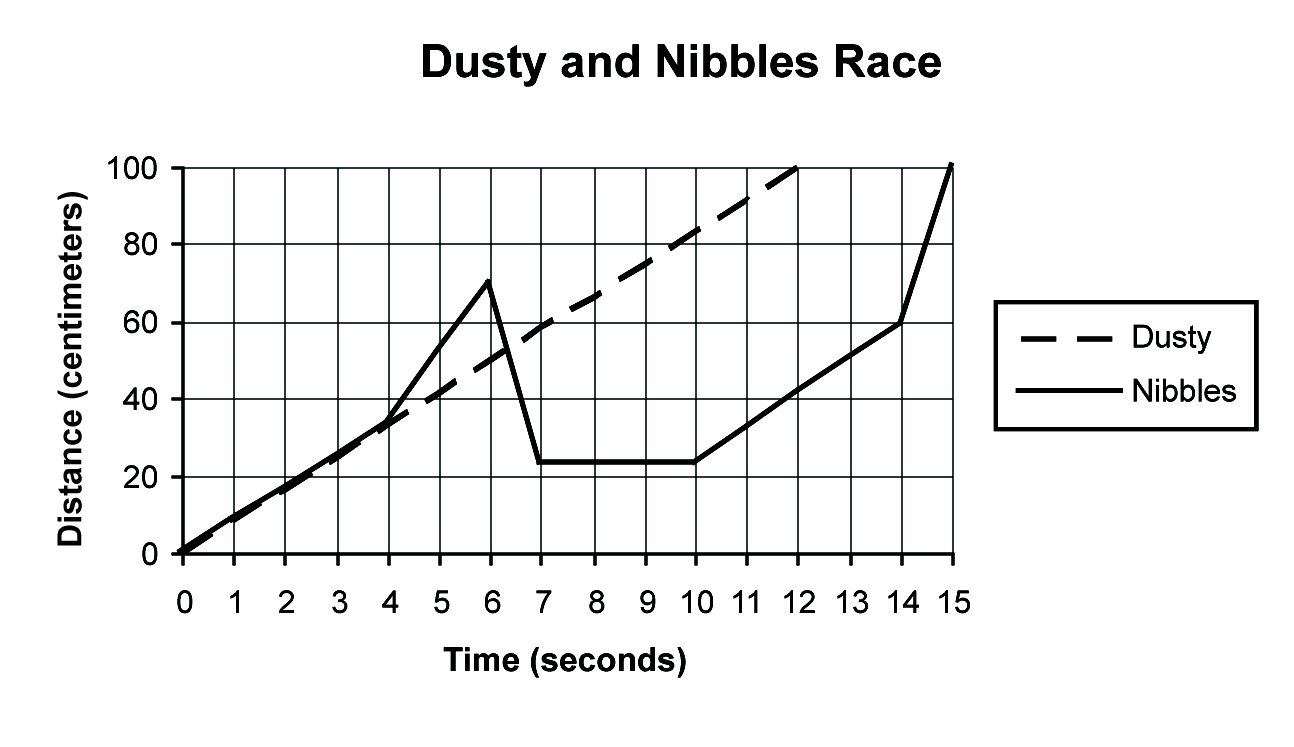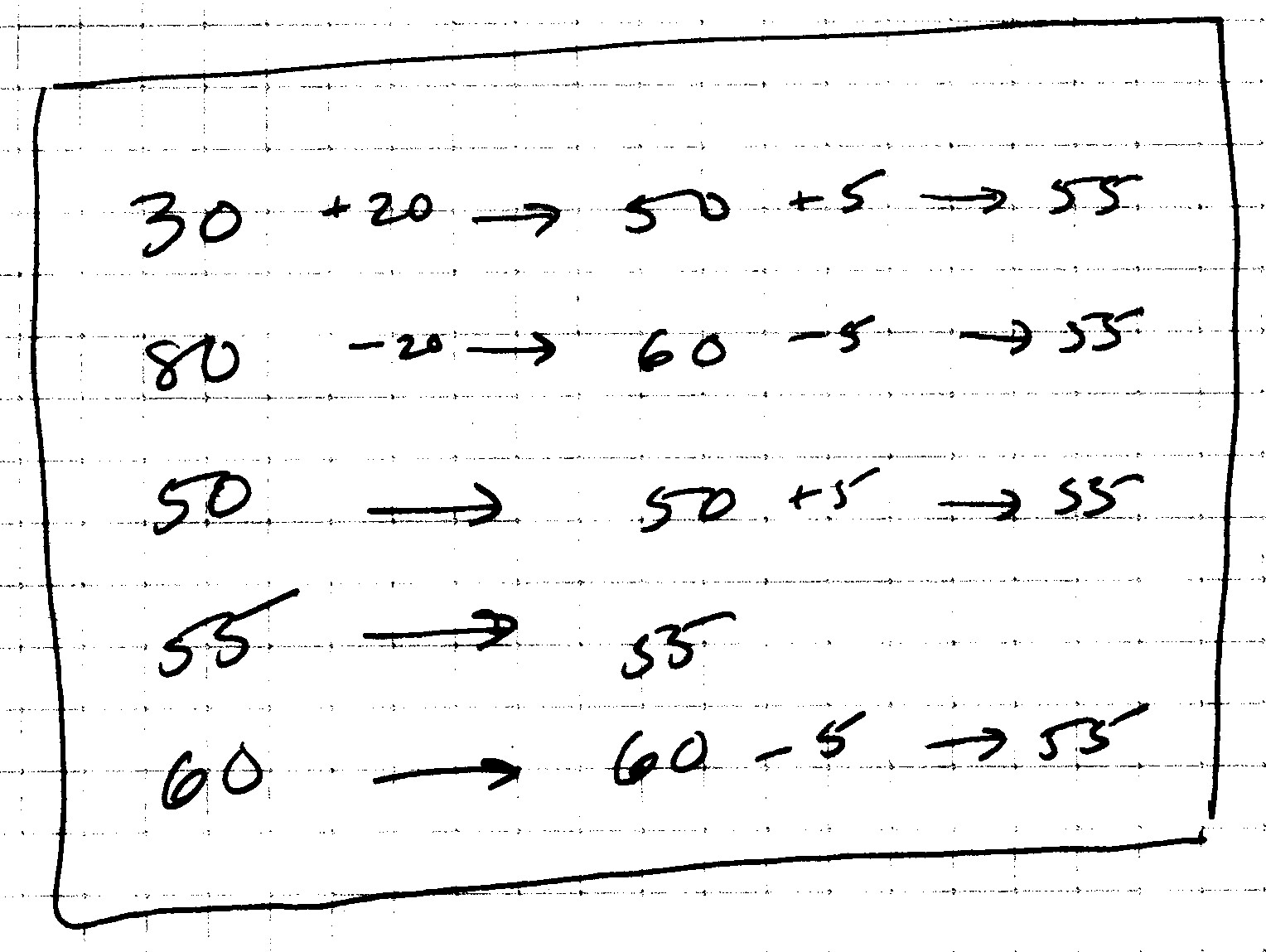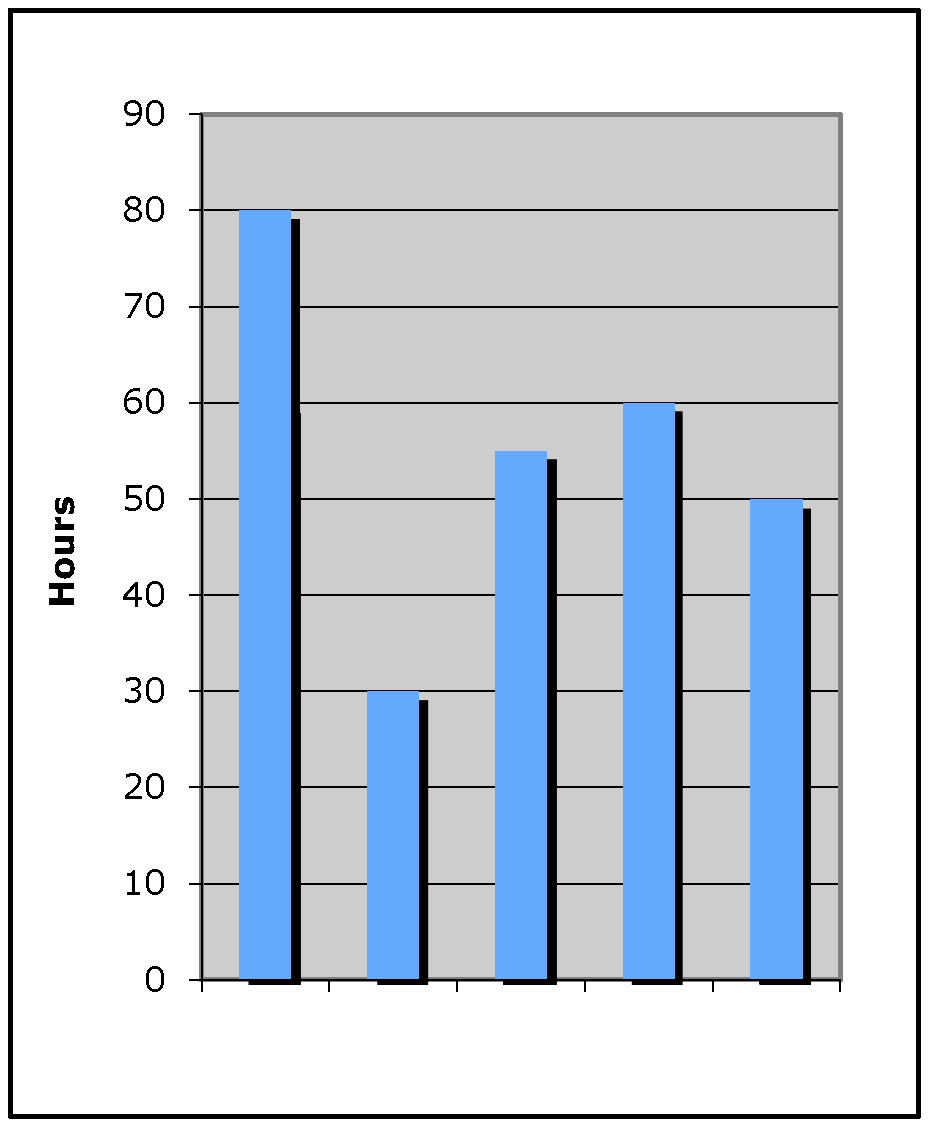ANI Content Assesment B
Strengthening America's Competitiveness through Math Instruction-Teacher Training Field Test
ANI NOANSWERS Content Assesment B
ANI Teachers
OMB: 1830-0572
ANI Content Assessment
Form B
1. Nathaniel suggested the following idea for doing the problem:
0.23
x 95
First I ignore the decimal point and do the multiplication, which gives me 2185. Then I use estimation to place the decimal point. I know that 0.23 is about 1/4 and 95 is about 100 and 1/4 of 100 is 25, so my answer would be 21.85.
Which of the following is most appropriate to say about Nathaniel’s approach? (Circle ONE answer.)
It happens to work in this case, but will not always work.
It only works if one of the numbers is a whole number.
It works for any numbers, but some examples are harder to estimate.
It works equally well for all problems.
2.
Mrs. Wise wants to include some word problems on her fractions quiz.
Which of the following problems could she use as a word problem for
![]() –
–
![]() ? (For each item below, circle YES, NO, or I’M NOT SURE.)
? (For each item below, circle YES, NO, or I’M NOT SURE.)
|
|
Yes |
No |
I’m not sure |
|
|
|
|
|
|
|
|
|
|
|
|
|
|
|
3. Mr. Lopez was attending a professional development program in mathematics. One day they worked on the following problem:
A program that is four weeks long is split into two equal sessions. The program’s first session has two instructors (Nina and Amy) and the program’s other session has five instructors (Melly, Rosa, Angela, Timo and Jim). What proportion of the overall program does Jim teach if all the teachers in his session share the work equally?
Several groups came up with different answers. There was a lot of discussion and disagreement. Which answer below is correct? (Mark ONE answer.)
e)
![]()
f) I’m not sure.
4. Teachers often offer students “rules of thumb” to help them remember particular mathematical ideas or procedures. Sometimes, however, these handy memory devices are not actually true, or they are not true for all numbers. For each of the following, decide whether it is true all of the time or not. (Mark TRUE FOR ALL NUMBERS, NOT ALWAYS TRUE, or I’M NOT SURE.)
|
True for all numbers |
Not always true |
I’m not sure |
|
|
|
|
|
|
|
|
|
|
|
|
|
|
|
|
5. Mrs. Margola asked, “If the ratio of boys to girls is 4:5, and there are 12 boys, how many children will there be in the class?” Jill and Kyle responded.
Jill:
In a class with 4
boys and 5 girls, the fraction of boys is
![]() ,
so I can solve the proportion
,
so I can solve the proportion
![]() =
=
![]() to find the total.
to find the total.
Kyle: The
way to represent a ratio like 4:5 is by using the fraction
![]() ,
so I started with
,
so I started with
![]() .
.
Which of the following statements is true about Jill’s and Kyle’s methods? (Circle ONE answer.)
Kyle’s method is incorrect because there is no way to use
 to find the answer.
to find the answer.
Jill’s method is incorrect because she is confusing fractions and ratios.
Neither Jill nor Kyle is correct; Jill has the wrong ratio and Kyle’s equation doesn’t give the total number of students.
Both Jill and Kyle can be correct. We can find the answer to the original question with either method as long as we add 12 to Kyle’s solution.
6. Students in Mr. Castle’s classroom are trying to figure out the amount of profit they will make on the sale of 90 raffle tickets if they make $7 profit for every 15 tickets sold.
As Mr. Castle monitors the work of students in his class, he notices one of the groups had drawn the following table:
Amount of Profit |
7 |
14 |
28 |
Number of Tickets |
15 |
30 |
60 |
One of the students argued that since 30 + 60 = 90 (the number of raffle tickets sold) that the amount of profit would be 14 + 28 = 42.
What is true about the student’s approach to the problem? (Circle ONE answer.)
The method is incorrect, even though it happens to give the right answer for this problem. You cannot add when working with proportions.
The answer is actually wrong.
The method is correct, but might not generalize easily to other numbers of tickets sold.
This method only works when you add quantities next to one another in the table.
7. Ms. Green was writing a worksheet for her students. She wanted to demonstrate that some situations are modeled by proportional relationships and others are not. Which of the following problems models a proportional relation? (Circle PROPORTIONAL, NOT PROPORTIONAL, or I’M NOT SURE for each.)
|
Proportional |
Not proportional |
I’m not sure |
a) The population of a certain type of bacteria doubles every 6 hours. If there are initially two bacteria in the culture, what will the population be after 30 hours?
|
1
|
2
|
3
|
b) Sal bought three raffle tickets for $5. How many tickets can he buy at the same price for $55?
|
1
|
2
|
3
|
c) Theda has 5 pictures for her portfolio. If she draws three pictures each week, how many pictures will she have after 4 weeks?
|
1
|
2
|
3
|
d) Ben is building steps with blocks. The steps look like the following. How many blocks will it take to build the nth set of steps?
|
1
|
2
|
3
|
e) Amir walks 3 miles each day as part of an exercise program. At this rate, how many miles will she walk in 10 days?
|
1
|
2
|
3
|
8.
Ms. Kelly was going to draw a picture of
![]() on the blackboard. She asked how many circles she should draw to
start, and to her surprise her students made different proposals.
on the blackboard. She asked how many circles she should draw to
start, and to her surprise her students made different proposals.




Asa: I would draw four circles because the denominator tells you what the whole is.



José: I was thinking that fractions mean divide, and three circles is the whole thing. I would start with three circles, then divide them up.

Mina: I would draw one circle. One is the whole, and you break the whole up into four parts.
Ms. Kelly had planned to draw one circle, but now she was unsure. Which of these students is using a correct interpretation of fractions? (Circle ONE answer.)
a) Only Asa.
b) Only José.
c) Only Mina.
d) Both Asa and Mina, but not José.
e) Asa, José, and Mina |
9. Mr. McWhorter wants his students to be able to read and interpret algebraic expressions in different ways. In the expression 2x + 3, for instance, his students might say that x is multiplied by two before having three added, or they might say that you start with three and then add two times x. He asks his students to interpret the following expression in different ways:
![]()
His students
arrive at several different interpretations of this expression. For
each statement, decide whether or not it correctly interprets
![]() .
(For each item below, circle CORRECTLY INTERPRETS
.
(For each item below, circle CORRECTLY INTERPRETS
![]() ,
INCORRECTLY INTERPRETS
,
INCORRECTLY INTERPRETS
![]() ,
or I’M NOT SURE.)
,
or I’M NOT SURE.)
|
Correctly interprets
|
Incorrectly interprets
|
I’m not sure |
|
|
|
|
|
|
|
|
|
|
|
|
|
|
|
|
10. Ms. Zeller gave her students the following problem.
The two class hamsters, Dusty and Nibbles, are racing. Describe what happens over the course of the race. |
|
|
|
Which of the students’ statements are consistent with the data as shown? (Circle CONSISTENT, INCONSISTENT, or I’M NOT SURE for each.)
|
Consistent |
Inconsis-tent |
I’m not sure |
|
1
|
2
|
3
|
|
1
|
2
|
3
|
|
1
|
2
|
3
|
11. Students are working on the problem below.
An original photo is 3 inches tall and 4 inches wide. The width of the enlarged photo is 6 inches. How tall is the enlargement if it is proportional to the original photo?
Maria says that the height of the enlarged photo should be 5 inches. She argues that because the difference between the height and width of the original photo is 1 inch, the difference between the height and width of the enlarged photo should also be 1 inch.
Alex says that the height of the enlarged photo should be 4.5 inches. He argues that because the width of the enlarged photo is 1.5 times the width of the original photo, the height of the enlarged photo should be 1.5 times the height of the original photo. And 1.5 x 3 = 4.5.
Which argument is valid? (Circle ONE answer).
Only Maria’s argument is valid.
Only Alex’s argument is valid.
Both arguments are valid.
Neither argument is valid.
12. As Mrs. Boyle was teaching subtraction one day, she noticed a few students subtracted in the following way:
13
63
_
328
35
What were these students most likely doing? (Mark ONE answer.)
The students “subtracted up,” by taking 3 away from 8, and then tried to compensate for this mistake.
The students compensated by subtracting 30 from 63, then dealt with the 8 and 3 in a second step.
The students made a mistake with the standard procedure, crossing out the 2 rather than the 6.
The students added ten to both 63 and 28, then subtracted.
I’m not sure.
13. Ms. Lewis’ class has been working with geoboards (a square grid of pegs at one unit intervals) to find areas and perimeters of polygons. One of the students, Emilio, creates the following example of a square:

Ms. Lewis asks her class to generate strategies for calculating the area of Emilio’s example. Which of the following are mathematically acceptable? (For each strategy mark YES, NO or I’M NOT SURE.)
|
Yes |
No |
I’m not sure |
|
1 |
2 |
3 |
|
1 |
2 |
3 |
|
1 |
2 |
3 |
|
1 |
2 |
3 |
14. Mr. Nager writes the following statement on the board:
The length and width of a rectangular swimming pool are each doubled, while the depth remains the same.
He asks his students to make mathematical statements about this pool. Which of the following student claims is true? (Mark ONE answer.)
It takes twice as much paint to paint the bottom.
It takes twice as much paint to paint the four walls.
It takes twice as much water to fill the pool.
All of the above.
None of the above.
I’m not sure.
15. Ms. Ashton was teaching her students to represent situations with algebra. She wanted to create a story or context that would be appropriately modeled by the equation y = 2x + 3.
Of the following stories, which would be appropriately modeled by the equation
y = 2x + 3, where x = 1, 2, 3, …? (For each item below, circle YES, NO or I’M NOT SURE.)
|
Yes |
No |
I’m not sure |
|
|
|
|
|
|
|
|
|
|
|
|
16. Carmen, a health-care worker, works different amounts of hours at different facilities. At last count, she had worked 30, 80, 50, 55, and 60 hours at the various locations and wanted to find the mean (average) hours she had worked at a facility. She used six different ways to figure it out and each time she came up with 55 for an answer. For each of her methods described below, decide whether it will work to find the mean for any group of amounts.
|
Yes |
No |
Not sure |
a) Take the smallest and the largest amounts, add them together and divide that in half to get the mean. |
|
|
|
b) Even out the amounts with addition and subtraction. That will get you to the mean
|
|
|
|
c) Arrange the amounts in order from smallest to largest; the amount in the middle will be the mean. |
|
|
|
d) Separate the original set of amounts into smaller groups and find the means of the small groups. Add the means that you found and divide by the number of groups you had. This will be the mean of the set of the original amounts. |
|
|
|
e) Add all the amounts together and then divide by the number of amounts you added. That is the mean. |
|
|
|
f) Draw a bar graph with each of the amounts as a bar. Take some amount from the higher bars and redistribute this amount to the lower bars until all the bars are the same height. This is the mean.
|
|
|
|
©Learning Mathematics for Teaching 2009. Mathematical knowledge for teaching measures: Patterns, Functions, and Algebra; Geometry; Numbers and Operations; Data, Probability and Statistics. Ann Arbor, MI: Authors.
Paperwork Burden Statement
According to the Paperwork reduction Act of 1995, no persons are required to respond to a collection of information unless such collection displays a valid OMB control number. The valid OMB control number for this information collection is 1830-XXXX. The time required to complete this information collection is estimated to average 20 minutes per response, including the time to review instructions, and complete the items. If you have any comments concerning the accuracy of the time estimate(s) or suggestions for improving this form, please write to: U.S. Department of Education, Washington, D.C. 20202-4537. If you have comments or concerns regarding the status of your individual submission of this form, write directly to: U.S. Department of Education, _____________________Division, _________________ Unit, 400 Maryland Avenue, S.W., PCP Room _________, Washington D.C. 20202-2800.
| File Type | application/msword |
| File Title | ANI Content Assessment |
| Author | LGinsburg |
| Last Modified By | Authorised User |
| File Modified | 2009-09-23 |
| File Created | 2009-09-22 |
© 2026 OMB.report | Privacy Policy



